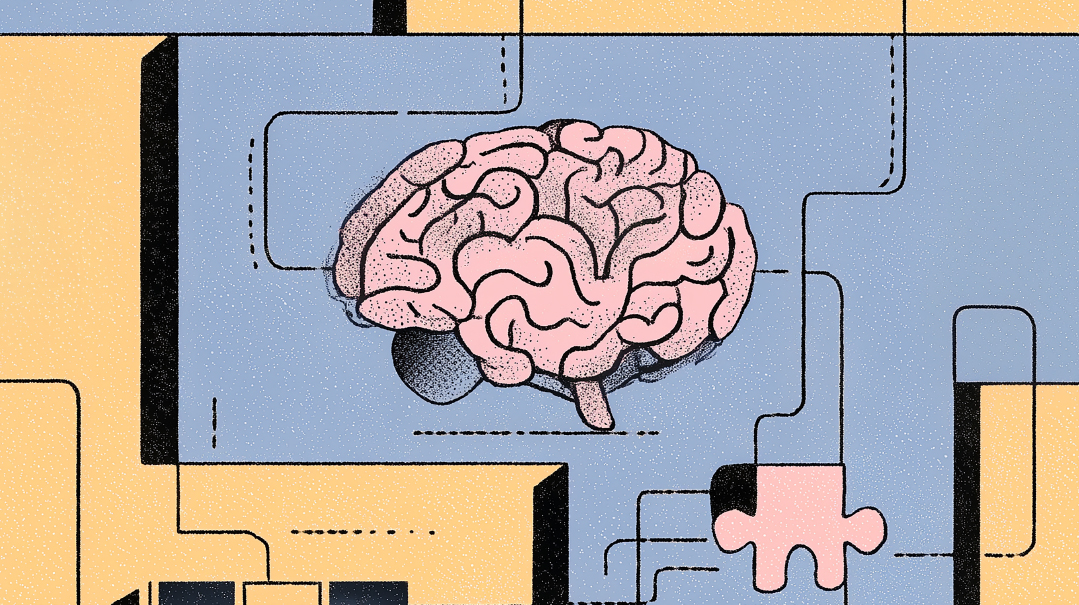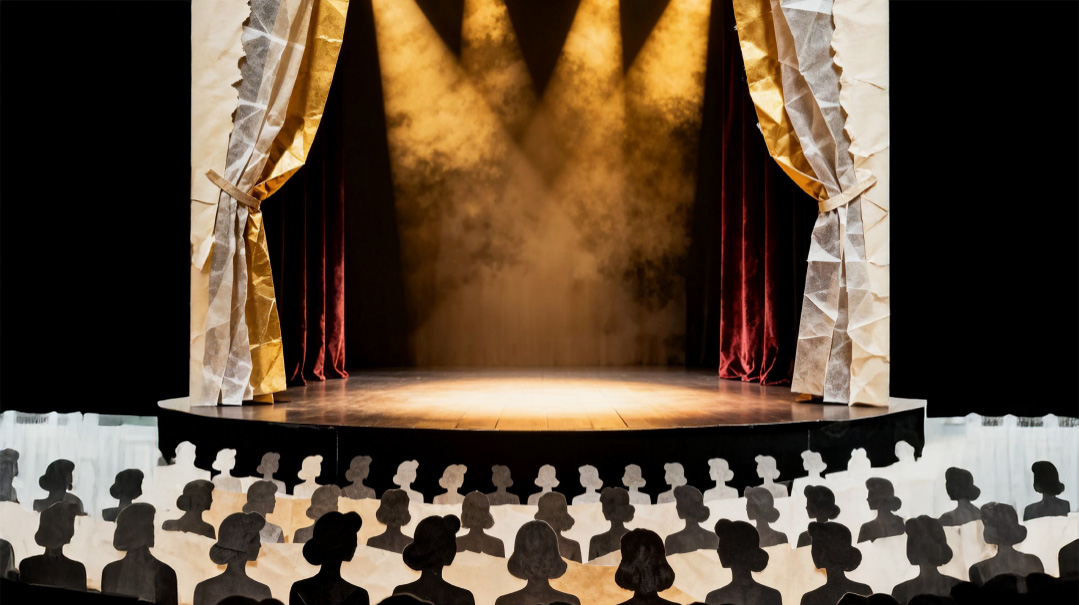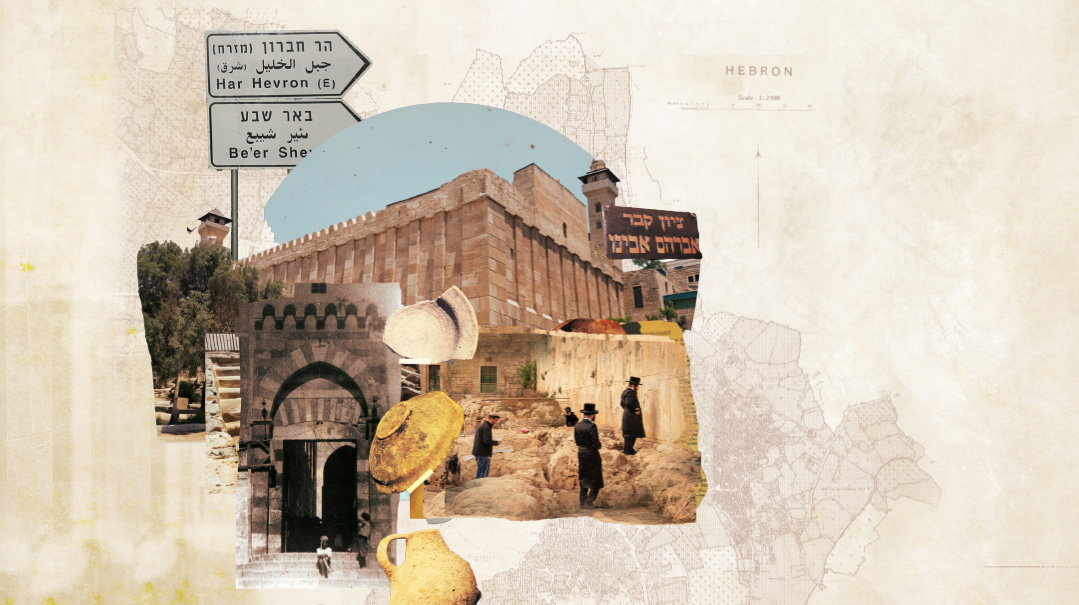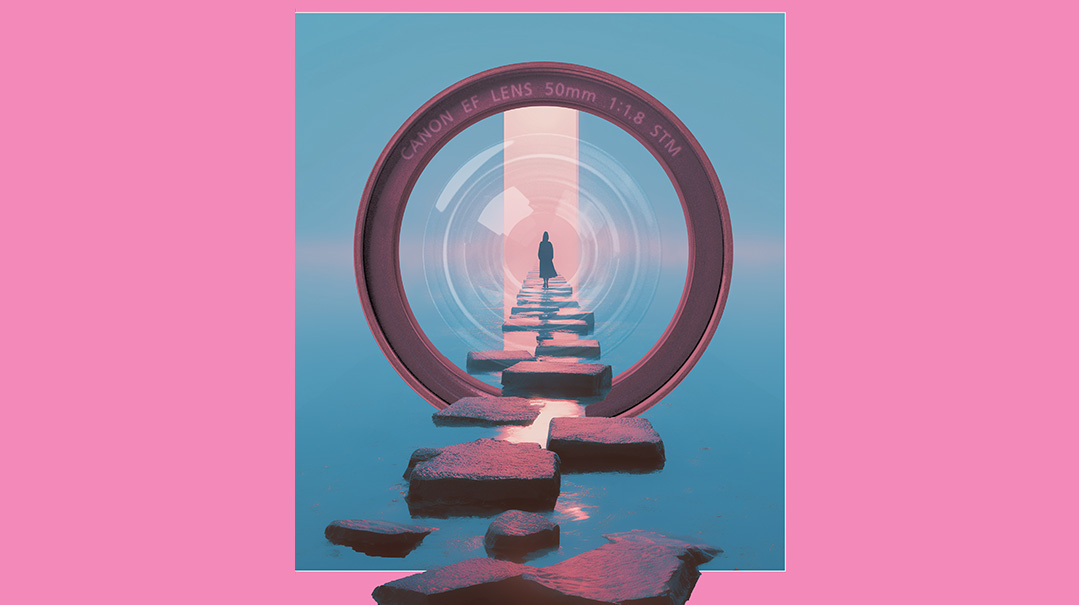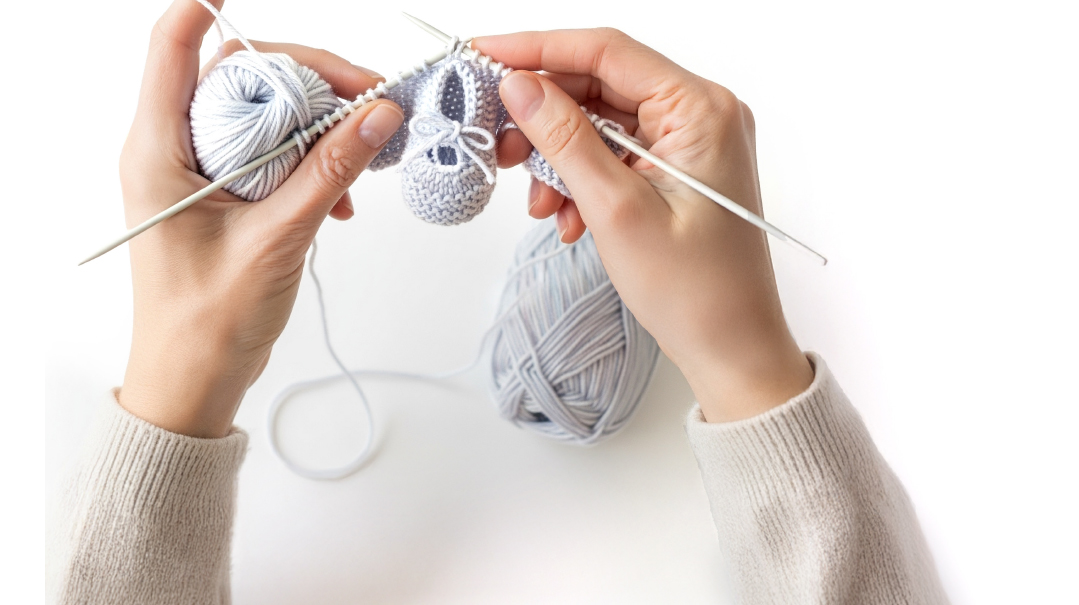The Last Bridge
| August 6, 2024Three women share how they began doing the holy work of the Chevra Kaddisha, and its impact on their lives

Bridges span the currents of Jewish life.
Bridges...
...between day and night.
...between kodesh and chol.
...between tamei and tahor.
But there’s one bridge that no Jew should cross alone.
The bridge between Life and Death, This World and the Next.
On that last bridge, stand the Chevra Kaddisha.
Three women share how they began doing the holy work of the Chevra Kaddisha, its impact on their lives, and the awesome privilege of participating in the ultimate chesed
One Step Closer
Mrs. Deena Abraham
Chevra Kaddisha of South Bend, Indiana, 27 plus years
T
he beginning of the year was the beginning of my journey.
I was in my twenties, married with a few little children, and life was filled with the typical chaos you’d expect in a young Jewish family. Months raced by, and I struggled to keep up — until Elul. A rare moment of peace revealed one troubling thought: What had I accomplished this past year? I was the same as the year before, and it was discouraging. I wanted something to add meaning to my hectic days. Hashem gave me the idea to take on something new, not a chumra or a mitzvah I was already doing, but something transformative. But what?
Not long after Succos, I was having my wisdom teeth out, so we stayed at my parents for Shabbos. While I endured surgery, my mother took my son to school. A nonreligious woman dropping off her kids told my mother that her grandmother had just passed away. The taharah needed to be arranged.
“I can’t get enough women to do a taharah,” my mother said when she returned. “I need to go. I feel bad, but can you cook for Shabbos?”
The revelation was brilliantly blinding. This was the mitzvah I was looking for. This was going to be my contribution to the community. I was young to be involved in taharos, but I accepted the responsibility.
At the time, I’d never been to a taharah, although I grew up surrounded by it. My mother, born and raised in South Bend, was part of what was then an elderly community. Her great-aunt was on the chevra kaddisha committee and was desperate for assistance. Squeamish and uninterested, my mother kept offering excuses: “I’m expecting/nursing/busy.” Years later, the wall of excuses crumbled, but the need was still there. My mother was frightened, but shouldered the responsibility, eventually taking charge of the entire operation, alongside my father. “Chevra Kaddisha” was part of everyday conversation, and Shabbos or Yom Tov meals were occasionally interrupted by funeral home personnel ringing our bell on days when the calendar indicated we couldn’t answer the phone.
My mother never asked me to be part of that world. I, sensing her anxiety surrounding her role, didn’t volunteer.
But it was time.
I didn’t know what to expect with my first taharah. Nervous, excited, and curious, I set foot on the bridge that spans worlds. I didn’t know the nifteres, but I knew her daughter, and her grandsons attended the local Jewish school.
“Just watch,” the other ladies told me, the wide-eyed first-timer. The women gently cleansed and prepared the nifteres, the whispers of their tefillos filling the silence. One of them showed me how to tie the knots on the tachrichim, the burial shrouds, and I followed her instructions. They lowered the woman into her coffin, and asked her for mechilah.
It was… beautiful.
Even now, I feel chills thinking of the first time.
It was the first of many taharos.
Years later, I had the privilege of being at the taharah of this woman’s daughter, and I was able to usher two generations of a family into Eternity.
Sometimes, as with my first, the taharos are easy, but sometimes they can be very hard. In our community, older traditional Jews want to be given a Jewish burial in their hometown, so they need to be flown in from other states. Depending on each state’s regulations, this can take a long time. The longer before the taharah begins, the harder it will be. People who suffered from illness can also be difficult to care for.
But we do it to the best of our ability, no matter the circumstances.
Sometimes we perform a taharah for someone who was obviously very distanced from Yiddishkeit. The presence of many colorful tattoos is jarring, but we do for these women what we do for everyone, treating all Jewish daughters with compassion and love.
For me, the young ones are the hardest taharos, and if I feel like I really can’t do it, I won’t.
This happened when a close friend of mine passed away, and even though I was ashamed of my weakness, I just couldn’t do the taharah.
“I’m not that strong,” I admitted to the other ladies. Instead, I sat outside the door, saying Tehillim the entire time.
When it’s an older person, even if it’s someone I know, I love doing the taharah. Just yesterday I did the taharah of a wonderful lady I’ve known for years, and when it’s not a difficult situation, this is especially meaningful.
My job isn’t limited to taharos, but also arranging women to attend each one. You can call it a yerushah from my mother, who was the head of the Chevra Kaddisha for years. I have three to four women on call who are nurses, and if we have a difficult situation, they help. For instance, if the nifteres had a port inserted to administer medication, or tubes, nurses can advise us on the removal. If someone underwent a recent autopsy or surgery, the taharah may need to be different. A nurse’s advice and calm, reassuring presence can be invaluable when this happens. We also work with local hospitals so that we can be prepared for any eventuality, such as medical equipment that needs to be removed.
Interestingly, when I first became part of the Chevra Kaddisha, there was a barrier of silence. I never told people when I went to a taharah. Once, after doing a taharah, I signed the paper for the Chevra Kaddisha records. At the levayah, someone from the family said to me, “I looked at the record and saw that you did the taharah. Thank you.”
I was stunned and uncomfortable, but now, with so many people opting for cremation, we need to talk more openly about it. Recently, a nonreligious woman lost her father, and I told her that all the men on the Chevra Kaddisha wanted to do his taharah because they felt so close to her late father. She was so touched, and declared that she was going to tell all her (nonreligious) siblings. People need to know the positive aspect of this mitzvah.
Doing taharos doesn’t make death less scary — but it redirects the fear. Will I be ready when the time comes? The concept of death, burial, and the neshamah moving on is real. Most people don’t know what we do between the death and the levayah, but they should understand that the dignity of the guf is paramount. Sometimes we need to pause in the middle of a taharah to ask a sh’eilah, and I find myself putting a hand on the guf’s shoulder — a quick, intimate gesture — and I tell her it will be okay, we’re going to continue soon.
I believe the neshamah hears, and I want her to know what’s happening.
Even when my mother was old and sick, she made arrangements for the Chevra Kaddisha.
“I can’t stop. This is the only thing I still do for the community,” she told me.
And I, following my mother, feel the same way. One woman I know even became a giyores after learning about the process of taharah.
“I never heard of a culture that treats the dead with so much respect,” she said.
Unique. Special. Wonderful.
Every taharah affects me. Even if I did it every day of every year, being at a taharah gives me the feeling of, Here we are again. Here we are, having been given this incredible opportunity to elevate a Jewish neshamah. Here we are, bringing a Jewish sister one step closer.
How doing taharos has changed my thoughts and feeling toward death:
Being involved with taharos makes me look at Olam Hazeh much more as a temporary stop on the way to a place that is so much better. On a day-to-day basis, most people don’t think about what comes next, but doing taharos brings it to the forefront of my mind. For me, death is real, and I think about it more than the average person. I believe that my essence is less rooted in This World, because I’m constantly aware of Olam Haba.
Gift of a Journey
Naomi Homnick
Chevra Kaddisha of Cincinnati, Indianapolis, Chicago, 24 years
I
never thought I could do a taharah.
My mother did taharos regularly, but I knew it wasn’t for me.
I was living in Cincinnati and turned 40 before the “never” turned into “often.” The Chevra Kaddisha was desperate for volunteers, and my friend kept pushing me. Rav Laizer Silver, the head of the Agudas Harabonim of the United States and the Rav of Cincinnati, ruled that no Jew in Cincinnati could be buried without a taharah, and now, decades later, even most Jews who are far from Yiddishkeit have a proper taharah. This makes the need for women even more pressing.
“Fine,” I told my friend. “Call me when a nice old lady dies in her sleep. I need simple and uncomplicated.”
My phone rang two weeks later. That first taharah was an incredible experience, and I thought, “If I can do this, I can do anything!” Just as we were about to leave, someone ran in and said that another woman needed a taharah. It was an exceptionally complicated case. Could we stay? I did, and was surprised to find that I was able to handle this one, too. Now I knew I really could do anything….
Of course, not everyone can do taharos, so those that can’t, babysit for those that can. Chesed hours in the local high school even include babysitting for women doing taharos. It’s a community effort.
It’s also a family effort.
One night, as I was about to leave to a taharah, my son asked, “Do you have to go tonight?”
“I’m grateful that I’m able to go,” I told him, and he accepted that.
The concept of death and dying isn’t as shocking for my family. On some level, it becomes familiar.
But that doesn’t mean all taharos are easy. Some are very hard.
Most of the people I’ve done taharos for were elderly, but I’ve had my share of young people. One was a teenager, swept away in a flash flood. A friend told me there are three times we are melaveh — escorting someone: for a guest, to the chuppah, and at a levayah. As we completed the girl’s taharah, the feeling of escorting this life cut short was especially strong. One mother of a teenage girl had to leave.
Thankfully, I’ve mostly done taharos for the elderly, and one was especially memorable. A disabled woman from the community outlived her entire family, so there was no one to participate at the levayah. My friend and I called the parents of all the local high school girls to ask if they could escort this meis mitzvah. Twelve girls agreed to come. No one else was at that levayah except for us and the rabbi. The girls participated and carried the woman’s aron. It was a powerful experience they never forgot, selflessly giving to someone who could never repay their kindness.
There are too many elderly women who have little family left, or only nonreligious family members. If I do the taharah, I try to attend the levayah. This works well, because when I do the taharah, we’re given the Hebrew name of the meis. Sometimes, the family — and even the rabbi — don’t know the nifteres’s real name. I remember telling a rabbi a woman’s Hebrew name, and he was so grateful.
But sometimes there isn’t any name. Sometimes it’s Sheryl bas Morris who we eulogize, and those levayos are the saddest.
Before Yom Tov can be especially challenging. One Erev Yom Tov, the Chevra Kaddisha couldn’t put together a group for a taharah. I hadn’t cooked yet, but I reasoned that I could over Yom Tov, so I went. Four hours before Yom Tov, I was finally able to start my preparations. That year, my cooking was the smoothest ever. I bentshed licht, surrounded by the aroma of a bewildering array of food. It was unreal — Hashem saw that I was taking care of His child, and He took care of me.
That wasn’t the only time I saw direct Hashgachah connected to this mitzvah. We had to move out of our house in Cincinnati, and there was nowhere to go. I was in the middle of venting about the situation to a friend when I received a call for a taharah. Afterward, I discovered that the woman lived in our neighborhood, and her house was being sold. I called after shivah, only to find that the house was taken. But when the deal fell through, they called back, and I was soon the owner of the perfect home for my family. If not for the taharah, I wouldn’t have known to ask, since she wasn’t a woman from our part of the community. I needed a home, and Hashem gave it to me through this mitzvah.
And sometimes it’s not a house or a Yom Tov meal, but a deep sense of closure.
I did the taharah for my best friend’s daughter. She didn’t say anything at the time, but years later, I heard her give a speech about hakaras hatov. “You never know when you get paid back for something you did,” she told the crowd. “I pushed my friend into doing taharos, and then this friend took care of my daughter when she passed away. For me, it was a gift.”
It was the friend who started my journey, and I helped her daughter on her final journey.
A taharah is very peaceful. It’s the chevra kaddisha and the neshamah. It’s not scary or terrible, but part of the magnificent cycle of life. The plague of cremation is real, but when we understand the beauty of this mitzvah, we can share it. Anyone who wants to look more deeply at this mitzvah should, because the riches of the end are endless.
It’s the gift of a journey that we give to those who cannot take the final step on their own.
How doing taharos has changed my thoughts and feeling toward death:
It didn’t. I still have a fear of death (like most people). But doing taharos changed my thoughts about kavod hameis. I’ve learned to feel a deep respect for the meis, as well as a love for the mitzvah itself.
To Give and to Serve
Chevra Kaddisha, Metropolitan area, 40 plus years
The beginning of the year was the beginning of my journey.
I was in my twenties, married with a few little children, and life was filled with the typical chaos you’d expect in a young Jewish family. Months raced by, and I struggled to keep up — until Elul. A rare moment of peace revealed one troubling thought: What had I accomplished this past year? I was the same as the year before, and it was discouraging. I wanted something to add meaning to my hectic days. Hashem gave me the idea to take on something new, not a chumra or a mitzvah I was already doing, but something transformative. But what?
Not long after Succos, I was having my wisdom teeth out, so we stayed at my parents for Shabbos. While I endured surgery, my mother took my son to school. A nonreligious woman dropping off her kids told my mother that her grandmother had just passed away. The taharah needed to be arranged.
“I can’t get enough women to do a taharah,” my mother said when she returned. “I need to go. I feel bad, but can you cook for Shabbos?”
The revelation was brilliantly blinding. This was the mitzvah I was looking for. This was going to be my contribution to the community. I was young to be involved in taharos, but I accepted the responsibility.
At the time, I’d never been to a taharah, although I grew up surrounded by it. My mother, born and raised in South Bend, was part of what was then an elderly community. Her great-aunt was on the chevra kaddisha committee and was desperate for assistance. Squeamish and uninterested, my mother kept offering excuses: “I’m expecting/nursing/busy.” Years later, the wall of excuses crumbled, but the need was still there. My mother was frightened, but shouldered the responsibility, eventually taking charge of the entire operation, alongside my father. “Chevra Kaddisha” was part of everyday conversation, and Shabbos or Yom Tov meals were occasionally interrupted by funeral home personnel ringing our bell on days when the calendar indicated we couldn’t answer the phone.
My mother never asked me to be part of that world. I, sensing her anxiety surrounding her role, didn’t volunteer.
But it was time.
I didn’t know what to expect with my first taharah. Nervous, excited, and curious, I set foot on the bridge that spans worlds. I didn’t know the nifteres, but I knew her daughter, and her grandsons attended the local Jewish school.
“Just watch,” the other ladies told me, the wide-eyed first-timer. The women gently cleansed and prepared the nifteres, the whispers of their tefillos filling the silence. One of them showed me how to tie the knots on the tachrichim, the burial shrouds, and I followed her instructions. They lowered the woman into her coffin, and asked her for mechilah.
It was… beautiful.
Even now, I feel chills thinking of the first time.
It was the first of many taharos.
Years later, I had the privilege of being at the taharah of this woman’s daughter, and I was able to usher two generations of a family into Eternity.
Sometimes, as with my first, the taharos are easy, but sometimes they can be very hard. In our community, older traditional Jews want to be given a Jewish burial in their hometown, so they need to be flown in from other states. Depending on each state’s regulations, this can take a long time. The longer before the taharah begins, the harder it will be. People who suffered from illness can also be difficult to care for.
But we do it to the best of our ability, no matter the circumstances.
Sometimes we perform a taharah for someone who was obviously very distanced from Yiddishkeit. The presence of many colorful tattoos is jarring, but we do for these women what we do for everyone, treating all Jewish daughters with compassion and love.
For me, the young ones are the hardest taharos, and if I feel like I really can’t do it, I won’t.
This happened when a close friend of mine passed away, and even though I was ashamed of my weakness, I just couldn’t do the taharah.
“I’m not that strong,” I admitted to the other ladies. Instead, I sat outside the door, saying Tehillim the entire time.
When it’s an older person, even if it’s someone I know, I love doing the taharah. Just yesterday I did the taharah of a wonderful lady I’ve known for years, and when it’s not a difficult situation, this is especially meaningful.
My job isn’t limited to taharos, but also arranging women to attend each one. You can call it a yerushah from my mother, who was the head of the Chevra Kaddisha for years. I have three to four women on call who are nurses, and if we have a difficult situation, they help. For instance, if the nifteres had a port inserted to administer medication, or tubes, nurses can advise us on the removal. If someone underwent a recent autopsy or surgery, the taharah may need to be different. A nurse’s advice and calm, reassuring presence can be invaluable when this happens. We also work with local hospitals so that we can be prepared for any eventuality, such as medical equipment that needs to be removed.
Interestingly, when I first became part of the Chevra Kaddisha, there was a barrier of silence. I never told people when I went to a taharah. Once, after doing a taharah, I signed the paper for the Chevra Kaddisha records. At the levayah, someone from the family said to me, “I looked at the record and saw that you did the taharah. Thank you.”
I was stunned and uncomfortable, but now, with so many people opting for cremation, we need to talk more openly about it. Recently, a nonreligious woman lost her father, and I told her that all the men on the Chevra Kaddisha wanted to do his taharah because they felt so close to her late father. She was so touched, and declared that she was going to tell all her (nonreligious) siblings. People need to know the positive aspect of this mitzvah.
Doing taharos doesn’t make death less scary — but it redirects the fear. Will I be ready when the time comes? The concept of death, burial, and the neshamah moving on is real. Most people don’t know what we do between the death and the levayah, but they should understand that the dignity of the guf is paramount. Sometimes we need to pause in the middle of a taharah to ask a sh’eilah, and I find myself putting a hand on the guf’s shoulder — a quick, intimate gesture — and I tell her it will be okay, we’re going to continue soon.
I believe the neshamah hears, and I want her to know what’s happening.
Even when my mother was old and sick, she made arrangements for the Chevra Kaddisha.
“I can’t stop. This is the only thing I still do for the community,” she told me.
And I, following my mother, feel the same way. One woman I know even became a giyores after learning about the process of taharah.
“I never heard of a culture that treats the dead with so much respect,” she said.
Unique. Special. Wonderful.
Every taharah affects me. Even if I did it every day of every year, being at a taharah gives me the feeling of, Here we are again. Here we are, having been given this incredible opportunity to elevate a Jewish neshamah. Here we are, bringing a Jewish sister one step closer.
How doing taharos has changed my thoughts and feeling toward death:
Being involved with taharos makes me look at Olam Hazeh much more as a temporary stop on the way to a place that is so much better. On a day-to-day basis, most people don’t think about what comes next, but doing taharos brings it to the forefront of my mind. For me, death is real, and I think about it more than the average person. I believe that my essence is less rooted in This World, because I’m constantly aware of Olam Haba.
On a Mission
While connecting with women involved in doing taharos, one name kept resurfacing. “Speak to Elissa Felder.”
A member of the Chevra Kaddisha of Providence, Rhode Island, Elissa’s personal involvement with taharos following the loss of her son translated into a deep desire to understand the depths of this mitzvah, help other women who perform taharos, and spread general awareness. Since her interview with Mishpacha two years ago, Elissa has forged ahead on her mission to publicize the holy work of the chevra kaddisha.
“My first taharah, seeing a body with no soul, was a jarring experience — and twenty-five years later it’s still jarring,” Elissa says. “But my passion for the mitzvah inspired a feeling of achrayus to share my knowledge and experiences with others, especially those who know very little about taharah.”
Facilitating a network of over 550 women in chevrei kaddisha spanning five continents, Elissa provides inspiration, information, and direction. One of the things she coordinates is arranging taharos in far-flung places for Jews who live in places with no chevra kaddisha. Elissa once received a request from a Chabad rebbetzin in rural California who needed women to perform a taharah for an elderly Holocaust survivor — on Erev Pesach! One woman flew in from Los Angeles, while another woman came from San Francisco, and they ensured the meis was properly taken care of.
As part of her mission to spread the mitzvah of taharah to all Jews, Elissa has just completed a book, From One Life to the Next Life: The Sacred Passage after Death, which is coming out in September 2024.
“It’s part memoir, part explanation of the mitzvah of taharah. Through the lens of the book, I give a clear view of the incredible process and background to this mitzvah. Family friends gave me permission to use the taharah process of their daughter, who tragically passed away young, to explain all the steps of a taharah, as well as the deep significance behind what the chevra kaddisha does,” she says.
Death isn’t an easy subject for many people, but Elissa feels that this knowledge is crucial, especially since there are so many Jews who no longer feel any connection to the concept of a Jewish burial. When exposed to the beauty of a taharah, there’s a chance that these Jews will reconsider and request a kevuras Yisrael.
One particular case stands out vividly for Elissa.
It was difficult; a sick, middle-aged drug addict. Not long after, I mentioned the taharah while visiting a friend.
“I was at the levayah,” my friend said. “I know the mother of that woman.” The next time I visited my friend, she invited the mother, explaining that I had done her daughter’s taharah.
The mother wasn’t pleased.
“What did you do to my daughter?” she cried.
I explained the process of a taharah. She calmed down. Gave me a tight hug.
A few months later, she called.
“I was just diagnosed with cancer. When I die, can you take care of me?”
“Absolutely. I will be there,” I said.
The day she passed away, I was in New York. I returned for her taharah.
I promised that I would take care of her.
And I did.
(Originally featured in Family First, Issue 905)
Oops! We could not locate your form.

